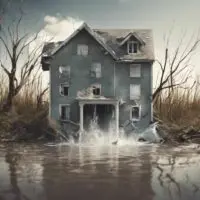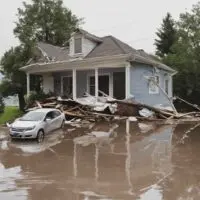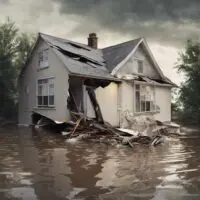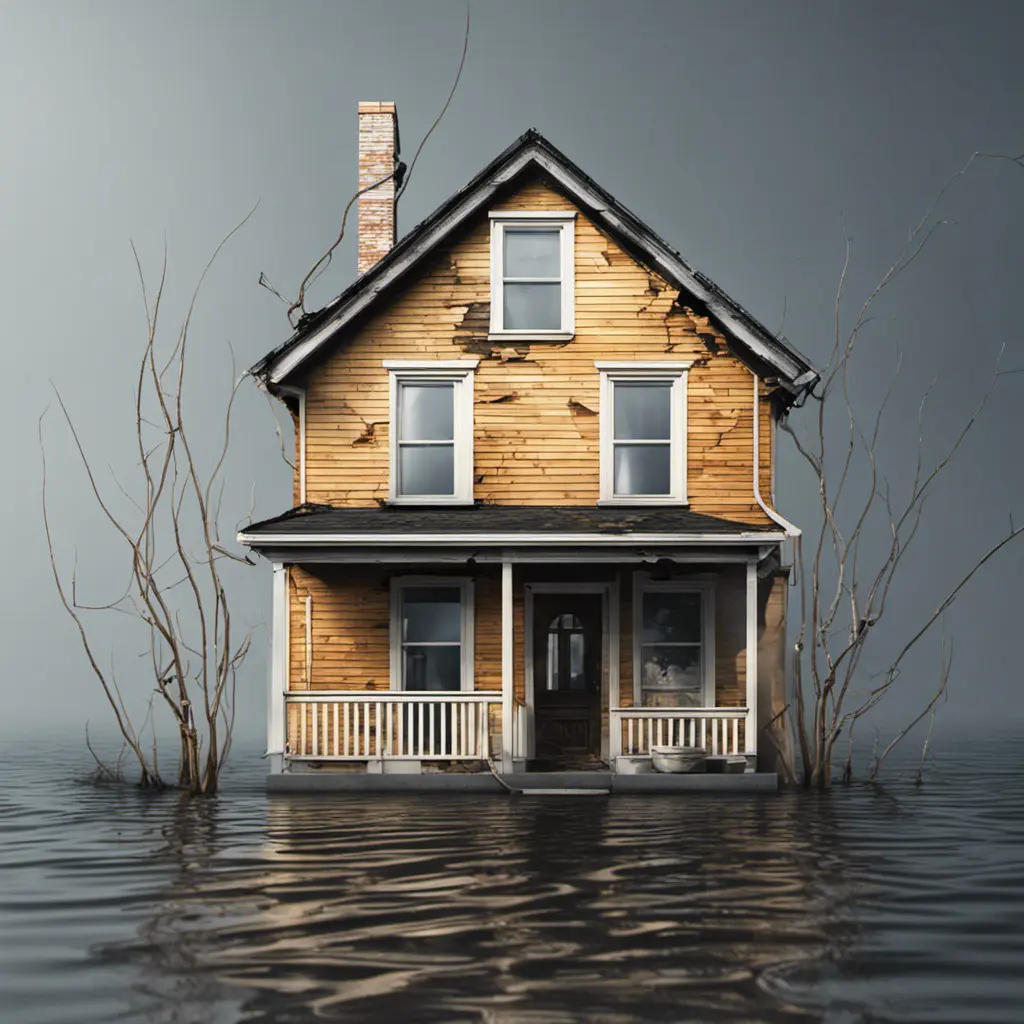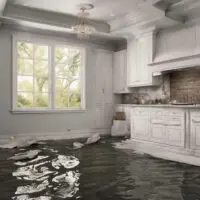
When it comes to home décor, leather furniture is a monument to classic sophistication and comfort. But when water damage occurs, the opulent appeal can be tarnished, leaving homeowners looking for ways to restore it.
This thorough guide is your ally in the restoration of water-damaged leather furniture, providing insights that go beyond the typical. From the types of leather to the techniques of restoration, every section is designed with simplicity and attention to detail to guarantee that your prized possessions regain their shine. Let us set out on this restoration journey together, where the grace of leather furniture is restored with a dash of common sense and tender loving care.
With its silky textures and deep colors, leather furniture adds a touch of sophistication to homes. But water damage opens a difficult new chapter in the furniture’s life, and this guide is a tribute to keeping the essence of leather elegance alive by walking you through the intricate process of restoring water-damaged leather furniture.
See also our post on 15 Important Water Damage Restoration Tips
What to Know About Leather Types
Not all leather is created equal, and understanding the type of leather is crucial for effective restoration.
Leather Varieties:
- Full-Grain Leather: Known for its natural markings and durability, full-grain leather is the highest quality. Restoration may involve gentle cleaning and conditioning to maintain its integrity.
- Top-Grain Leather: Slightly more processed than full-grain, top-grain leather retains a natural look. Water damage restoration may involve reconditioning to restore its softness.
- Split-Grain Leather: Made from the lower layers of the hide, split-grain leather is more susceptible to water damage. Restoration may involve rehydration and careful conditioning.
- Bonded Leather: Composed of leather scraps bonded with polyurethane, bonded leather is sensitive to water. Restoration may be challenging, requiring professional intervention.
- Faux Leather: Synthetic and water-resistant, faux leather is more forgiving to water exposure. Restoration typically involves simple cleaning and conditioning.
Assessing Water Damage Severity
Understanding the extent of water damage is vital before embarking on restoration efforts.
Severity Assessment:
- Surface Stains: Superficial water stains may only require surface cleaning and conditioning. Evaluate the extent of discoloration to determine the appropriate restoration approach.
- Swelling or Warping: If the leather has swollen or warped due to water absorption, restoration may involve careful drying techniques and reshaping.
- Mold or Mildew Growth: Mold and mildew can thrive in damp conditions. Addressing these issues requires thorough cleaning and specialized treatments to prevent regrowth.
- Color Bleeding: In cases of severe water damage, color bleeding may occur. Restoration may involve color correction techniques to restore the original hue.
- Structural Integrity: Assess the structural integrity of the furniture frame. Water damage can compromise the frame, and restoration may involve repairs or reinforcement.
Swift Water Removal Techniques
Efficiently removing water from leather is crucial to prevent further damage.
Water Removal Strategies:
- Blotting with Towels: Use absorbent towels to blot excess water from the surface. Apply gentle pressure to encourage absorption without damaging the leather.
- Air Drying: Allow the leather to air dry naturally. Avoid using heat sources like hairdryers or direct sunlight, as these can cause further damage.
- Use of Microfiber Cloths: Employ microfiber cloths to gently pat and absorb residual moisture. Microfiber is gentle and won’t scratch the leather.
- Ventilation: Enhance ventilation in the room to facilitate drying. Use fans or open windows to promote air circulation around the furniture.
- Avoiding Heat Appliances: Refrain from using heat appliances like heaters or fans directly on the leather. Excessive heat can cause the leather to crack or lose its natural oils.
See also our post on Professional Water Damage Restoration Services, West Lake Hill, TX
Conditioning and Rehydration
Replenishing lost moisture is crucial for restoring the suppleness of water-damaged leather.
Conditioning Techniques:
- Leather Conditioner Application: Apply a high-quality leather conditioner to the entire surface. Work it into the leather using a soft cloth, focusing on areas that may have lost moisture.
- Avoiding Petroleum-Based Products: Refrain from using petroleum-based products as they can damage leather over time. Opt for specialized leather conditioners designed for restoration.
- Multiple Conditioning Sessions: For severe water damage, consider multiple conditioning sessions. Apply conditioner, allow it to be absorbed, and repeat until the leather regains its softness.
- Spot Testing: Before applying conditioner, conduct a spot test in an inconspicuous area. This ensures compatibility and prevents unexpected reactions on the visible surface.
- Use of Beeswax Products: In cases of minor scuffs or scratches, consider using beeswax-based leather products. These can help restore minor damage and provide a protective layer.
Dealing with Mold and Mildew
Mold and mildew require specialized attention to prevent further growth and restore the leather.
Mold and Mildew Removal:
- Gentle Brushing: Use a soft brush to gently remove surface mold or mildew. Ensure the brush is clean and dry to avoid spreading spores.
- Vinegar Solution: Mix a solution of equal parts white vinegar and water. Dab the affected areas with a clean cloth soaked in the solution to eliminate mold and mildew.
- Avoiding Harsh Cleaners: Refrain from using harsh chemical cleaners, as they can damage the leather. Opt for mild solutions to preserve the natural oils.
- Sunlight Exposure: If possible, expose the leather to sunlight in moderation. Sunlight helps inhibit mold growth and contributes to drying out the leather.
- Professional Mold Remediation: In severe cases, consider professional mold remediation services. They have the expertise and tools to handle extensive mold damage safely.
Repairing Physical Damage
Water damage can lead to physical damage like scratches or warping, requiring targeted repairs.
Physical Damage Repair:
- Scratch Repair Kits: Use leather scratch repair kits for minor scratches. Follow the instructions carefully, applying the repair solution and buffing the area to blend the repair seamlessly.
- Distressed Leather Techniques: Embrace the natural distressing of leather by gently rubbing the entire surface with a soft cloth. This can help even out minor damage and create a consistent appearance.
- Steam Treatment for Warping: For warped leather, consider using a handheld steamer. Gently steam the affected areas and reshape them using your hands. Allow the leather to dry naturally.
- Professional Leather Repairs: Engage professional leather repair services for extensive or intricate damage. Professionals can match colors and textures to ensure seamless restoration.
- Preventive Measures: Once repaired, implement preventive measures like using leather protectants to guard against future water damage and physical wear.
Ongoing Maintenance for Leather Longevity
Sustaining the restored beauty of leather furniture requires consistent care and maintenance.
Longevity Maintenance Tips:
- Regular Dusting: Dust leather furniture regularly with a soft, dry cloth to prevent the accumulation of dirt and debris.
- Periodic Conditioning: Periodically apply leather conditioner to maintain moisture levels and prevent dryness. This simple step prolongs the life of the leather.
- Avoiding Direct Sunlight: Protect leather furniture from prolonged exposure to direct sunlight. Use curtains or blinds to prevent fading and drying.
- Leather Protectants: Consider using leather protectant products to create a barrier against spills and water damage. Follow product instructions for optimal results.
- Prompt Spill Cleanup: Address spills promptly by blotting and absorbing excess liquid. Clean the area with a damp cloth and reapply conditioner if necessary.
See also our post on Professional Water Damage Restoration Services, Wells Branch, TX
Conclusion
Water-damaged leather furniture restoration is a laborious process that calls for attention to detail, patience, and a deep knowledge of the properties of leather. From identifying the different types of leather to applying specific restoration methods, this guide will help you bring back the beauty of your prized possessions.
May every step of this restoration journey serve as a tribute to the strength and timeless beauty of leather furniture. With your unwavering restoration efforts, these pieces will not only reclaim their former splendor but also serve as classic representations of your unwavering commitment to creating a cozy and elegant home.
